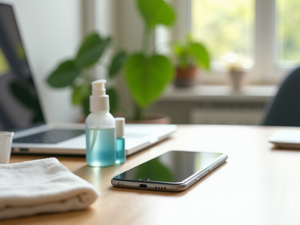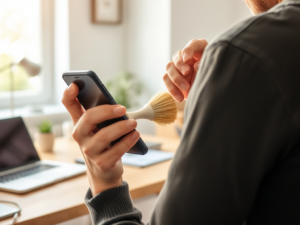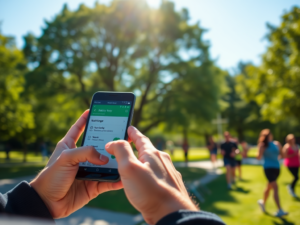As winter approaches, the thrill of snowy days and chilly evenings often comes alongside the subtle yet significant challenges cold weather poses for our beloved smartphones. Every year, users face disappointing performances from their devices when the temperature drops, leaving them frustrated with a dying battery at inopportune moments. Fortunately, this article offers a comprehensive guide on protecting your phone’s battery during the winter months, ensuring it remains charged and ready when you need it most. The cold can significantly affect battery life, but there are practical strategies to minimize damage and prolong usage. Let’s explore how to maintain optimal battery health with effective tips and best practices. With these insights, you can embrace winter without fear of losing power right when you’re about to capture that perfect snow-covered landscape.
Understanding the Impact of Cold Weather on Phone Batteries

Cold temperatures can cause your phone battery to lose charge more quickly than usual. When exposed to frigid conditions, the chemical reactions within lithium-ion batteries slow down, which inhibits their ability to hold a charge. As a result, you may notice that your battery drains faster outdoors or in unheated locations. This reaction is not just a minor inconvenience; it can significantly degrade battery performance over time. Furthermore, extreme cold can lead to unexpected shutdowns, rendering your device unusable. For this reason, recognizing the effects of low temperatures is the first step in safeguarding your phone’s battery life throughout winter.
Best Practices for Keeping Your Phone Battery Warm

Keeping your phone warm is crucial in cold weather. Here are some strategies to help maintain optimal battery temperature. These tips are designed to protect your device while ensuring it remains functional when you need it most. It’s easy to overlook how small adjustments can make a big difference. Incorporating some of these practices into your daily routine can lead to improved battery health. Investing a little effort now can save you headaches later on.
- Keep Your Phone Close to Your Body: One of the simplest ways to keep your phone warm is to keep it in your pocket. Your body heat can help insulate the device against frigid temperatures.
- Use Insulated Cases: Investing in an insulated phone case can provide an extra layer of protection against the cold. These cases are designed to retain heat and prevent temperature drops that can drain your battery.
| Tip | Description |
|---|---|
| Body Heat | Keeping your phone in a pocket or against your body helps maintain temperature. |
| Insulated Cases | Special cases designed to keep your device warm in cold conditions. |
Managing Your Phone Usage in Winter
Adjusting how you use your phone during winter can help preserve battery life. By being intentional about your device’s usage, you can significantly extend its operational period. Many users don’t realize that minor adjustments to settings can lead to tremendous energy savings. For instance, reducing your screen brightness can make a noticeable difference. During winter, when sunlight is less intense, it’s feasible to operate your device comfortably at a lower brightness level. This not only helps in energy conservation but also reduces strain on your eyes.
- Reduce Screen Brightness: Lowering your screen brightness can help conserve battery power. In winter, bright sunlight can be less intense, allowing you to use your device comfortably at a lower brightness setting.
- Limit Background Activity: Apps running in the background can drain your battery life faster, especially in cold conditions. Disable unnecessary background activities and notifications to save power.
Charging Practices for Cold Weather
How and when you charge your phone can impact its battery health during winter. The cold can affect the efficiency of the charging process, making it essential to adopt smart practices. For instance, it’s wise to engage a protective approach to charging habits during these chilly months. Specifically, you should avoid fully discharging your battery. Letting your battery run down to 0% can be particularly detrimental in winter. Instead, try to keep your battery charged between 20% and 80% for optimal performance. This strategy not only improves your battery’s longevity but also minimizes the risk of sudden shutdowns.
Conclusion
Protecting your phone battery during winter involves understanding how cold weather affects your device, implementing practical usage strategies, and adopting smart charging practices. By taking these necessary steps, you can preserve battery health and ensure that your phone remains functional throughout the winter months. Remember, a few simple precautions can help you avoid the dilemma of a drained battery when you need your device the most. With the right mindset and awareness, you can make this winter a hassle-free experience for your smartphone.
Frequently Asked Questions
- What temperature is harmful to phone batteries? Temperatures below 32°F (0°C) can start to negatively affect battery performance.
- Should I keep my phone in a warm place during winter? Yes, keeping your phone in a warm environment, like your pocket, can help maintain battery life.
- Can I charge my phone in cold weather? Yes, but be cautious. Charging in extremely low temperatures can affect battery health, so allow your phone to warm up a bit before charging.
- Does leaving my phone in the cold cause permanent damage? While occasional exposure may not cause irreversible damage, prolonged exposure to extreme cold can lead to reduced battery capacity over time.
- Are there phone cases designed for winter? Yes, there are specialized insulated cases that provide extra warmth for your phone in cold conditions.












